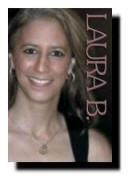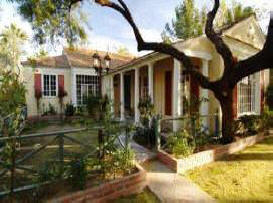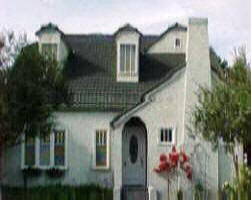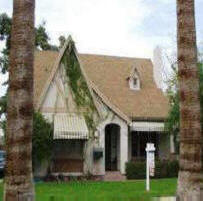Los Olivos Historical
District Map, Information, History and Homes For Sale
Located along Monte Vista Road between 3rd and 7th
streets, Phoenix, Arizona.
Deep landscaped lawns and large Revival Style and
Craftsman custom homes make up the smallest
historic
district in Phoenix; Los Olivos. The beautiful
palm-lined streetscape, which is not too common in
downtown Phoenix, adds to the historic value and
integrity of this district.
The original developers of
Los Olivos Historic
District aimed for quality construction, well-heeled
buyers and stable property values. You'll probably find
a grand living room, formal dining room, and detached
garage on any one of these thre-quarters of an acre
estates. You may find a wine cellar or tennis courts,
library or guest quarters.
The average square footage of a Los Olivos home means
little since each is custom built and unique, but that
average is 2,800 square feet, typically with 4 or 5
bedrooms and a similar number of baths.
Los Olivos Historic District
was a prestigious
out-of-town address when these homes were custom built
in the 1920's. Although the city has grown around Los
Olivos over the decades and it is now central Phoenix,
it hasn’t lost any of that original prestige. Homes
rarely come on the market and, when they do, they are
some of the priciest historic real estate in Phoenix.
DEVELOPMENTAL HISTORY
Introduction
Development in Los
Olivos followed predominant trends and patterns of
subdivision growth in Phoenix during the early part of
this period when suburban development was promoted to
well-to-do families who could afford to live in the
country. Built out over a 25-year period of time, the
exclusive enclave developed as one of several
Picturesque Neighborhoods (1911-1955) in Phoenix. Houses
in Los Olivos bear a variety of romantic residential
styles that represent the architectural designs popular
at the time of their construction. Among the earliest
houses are several Craftsman influenced bungalows which
were widely popular in Phoenix during the 1910's and
early 1920's. Most of the houses were built in the
1920's, however, when Period Revival styles gained favor
in the high-end residential market. Los Olivos includes
good examples of Spanish Eclectic,
Tudor Revival, and
Colonial Revival architecture from this period. The last
historic-age house built in the district was built in
1955, 25 years after the previous house was completed.
Los Olivos
The
Los Olivos
Historic District is a small, early 20th century
neighborhood in
north-central Phoenix that was platted
by developer Dwight B. Heard as part of a much larger
160-acre Los Olivos Subdivision in 1906. Heard named his
subdivision for the olive trees that still grace the
streetscape along Monte Vista Road. At 160-acres,
Heard's residential subdivision was the largest of
Phoenix's early home site plats. The original
subdivision stretched from McDowell Road on the south,
to Oak Street on the north, and from Central Avenue on
the east to Cave Creek Road (7th Street) on the west;
the tract lay just beyond the city's northern limits.
Heard intended his large subdivision to be a
prestigious enclave of small estates and carved the land
into 32 five-acre parcels for sale to discriminating
buyers. He laid out two intersecting interior streets,
Palm Lane and Buena Avenue (now Third Street) which
divided the tract into four quadrants of 40 acres
apiece. In the original plat, most of the 32 five-acre
lots fronted onto the north-south streets of Central
Avenue, 3rd Street, and 7th Street.
Slow sales
proved that there were few buyers for such commodious,
and relatively expensive, lots in the first decade of
the Twentieth Century. In 1909, Heard re-subdivided his
160-acre tract to create more affordable building sites
suited to a broader clientele. In doing so, he cut most
of the thirty-two original lots in half, creating 54
smaller lots. Coronado Road and Monte Vista Road were
added at that time to access the new lots. In 1911,
Heard carved six one-acre lots from the 40-acre
southwest portion of the development. The lots fronted
onto Alvarado Road, a north-south street set between
Central Avenue and 3rd Street.
From the outset,
Heard embarked on an energetic advertising campaign to
attract affluent buyers to his development. A 1911
newspaper ad for Los Olivos was typical of his efforts.
Prospective buyers were assured that the subdivision was
easily the foremost (of many fine neighborhoods) and
that the houses would be the most modern available.
Heard drew an almost idyllic portrait of the former
farmland now platted into residential lots. The
development boasted four miles of palm trees and a
mild slope that provided views of the valley and allowed
for irrigation. Heard claimed that Central Avenue, paved
with macadam and oil, was one of the most delightful
drives in the west and that Los Olivos offered the
comfort and freedom of the country with all the
conveniences of the city. Such amenities included city
water, electricity, telephone service, and electric
streetcars.
Although the subdivision lay outside
the city limits, about a mile from downtown Phoenix,
Heard's advertisements assured prospective home buyers
that they were only a few minutes from the business
district via the Indian School streetcar line. The line
followed 3rd Street, which separated the subdivision
into east-west halves, thus affording good streetcar
access to downtown throughout the neighborhood.
Heard sought to protect both the value of his
subdivision and the investments of his clients by,
restricting the type and quality of construction within
the tract. He promoted the subdivision as having
restrictions; to assure a continuation of improvement
in every way. Buildings of any undesirable character
were prohibited and minimum building costs were mandated
to set property values and attract status-conscious
buyers. Building costs reflected the desirability of
certain streets. For example, houses fronting onto
Central Avenue were required to cost at least $6,000
while those on Monte Vista Road were less restrictive
with a minimum cost of $3,500 apiece. Deed restrictions
dictated the locations of houses, garages, and stables
relative to the street, as well as the number of
buildings on each site. Such restraints prevented
unsightly streetscapes and maintained property values.
Amenities and restrictions, coupled with significant
growth in the early 1910's, following the completion of
the Salt River Project, helped spur development in Los
Olivos. Twenty-six of the now sixty lots had sold by
1911. In 1913, Heard re-platted the subdivision again,
creating eight lots along Monte Vista Road and two lots
immediately to the north. The new plat was called Los
Olivos Resubdivided. The current Los Olivos Historic
District on Monte Vista Road is part of this early
resubdivision. Heard intended Monte Vista Road to be a
residential haven with large lots, quality construction,
sidewalks, and tree-lined streets.
The present
Los Olivos Historic District is one of the few sections
of the original
Los Olivos Subdivision that maintains
its plat from the first period of construction
(1911-1915). It is the only part of the original Los
Olivos Resubdivided plat that was not further subdivided
in the 1920's and which remains entirely residential. The
rest of Heard's 160-acre subdivision sustained numerous
resubdivisions throughout the 1920's as Phoenix grew,
both in size and in population.
Information, maps provided courtesy: Historic
Preservation Office of the City of Phoenix
Neighborhood Services Department 200 West Washington
Street
Phoenix, Arizona 85003
 |

Laura Boyajian
Mobile: 602.400.0008
HistoricCentralPhoenix@cox.net
|


